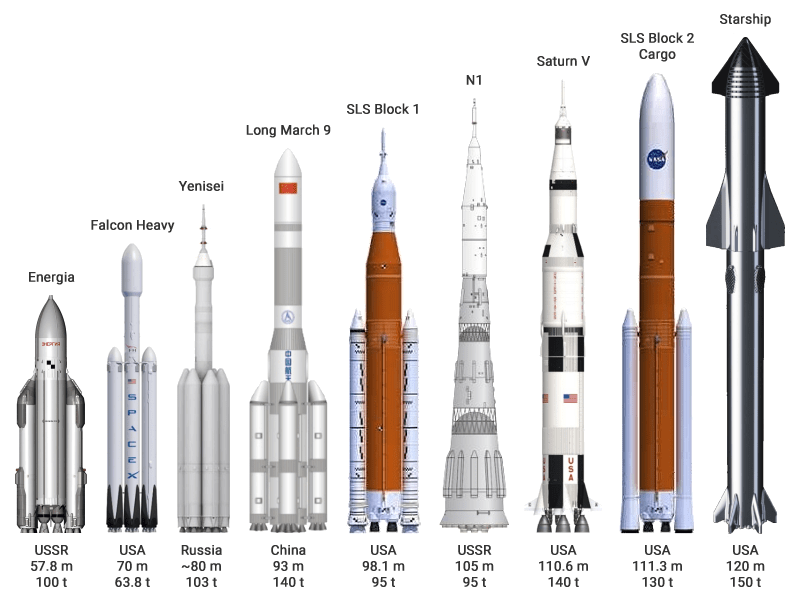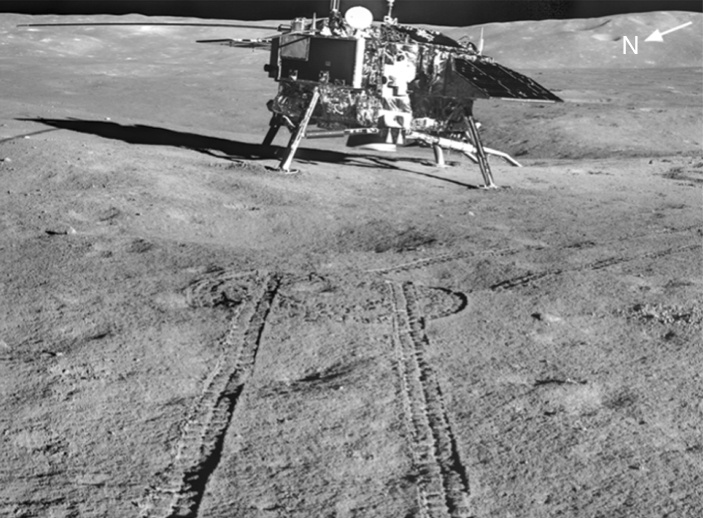China’s Super-Heavy Lift Rocket Will Carry 100 Tons to the Moon
By Scott Alan Johnston
China’s proposed next-generation rocket reached the final stage of feasibility studies this month. The planned launch vehicle, known as the Long March-9, will be capable of sending 100 tons to the Moon, and could see its first launch as early as 2030.
Announced in 2018, the Long March-9 will play a key role in China’s long-term space ambitions. If all goes as planned, its first payload is likely to be a Martian sample return mission, and it would support China’s Lunar ambitions as well. Another proposed use for the super-heavy lift vehicle is to build an experimental space-based solar power station, although plans for that project are still very tentative.
The Long March-9 is the China National Space Administration’s (CNSA) answer to NASA’s Space Launch System (SLS), at least in terms of payload capability, but it may not be used for crewed Lunar missions in the same way as SLS. Instead, it appears the Long March-9 will send up infrastructure and supplies, while humans will ride in a different proposed vehicle, currently known only as the ‘921 Rocket.’ Whether both vehicles end up being approved and developed in parallel is still an open question.
It is also unclear whether the Long March-9 will be reusable. If not, it may hamper the rocket’s longevity, as the CNSA hopes to make all its launch vehicles reusable by 2035, if it can. The CNSA’s first attempt at a reusable first stage will be the Long March-8, which launched for the first time last December (in an expendable form).

The Long March-9 is close to receiving state approval. According to Luan Enjie, former head of the China National Space Administration, it will then enter the next phase of development, in which hardware will be produced and tested. “We are working toward initiating research work of the heavy-lift launch vehicle within the 14th Five Year Plan period (2021-25),” he said.
When complete, the Long March-9 will go far beyond the capabilities of any of the CNSA’s current vehicles. It will stand 93 meters tall, with a 10-meter-wide core stage. Its first stage will be assisted by four massive side boosters, allowing the rocket to carry 150-ton payloads to low earth orbit (six times more than the current Long March-5 rocket).
China has been pushing hard in recent years to become a contender in space exploration. Due to political differences, there has been almost no collaboration between the United States and China in space in the twenty-first century. But the CNSA has made progress on its own, becoming the third nation (after the Soviet Union and the United States) to independently send a human to space in 2003. In recent years, it has ramped up its robotic programs too, completing the first Lunar sample return in over 40 years in 2020, and successfully landing two Lunar rovers. One of the rovers, Chang’e 4, was the first spacecraft ever to soft land on the far side of the Moon, and is still operating. The CNSA also launched a robotic mission to Mars last year, named Tianwen-1, which arrived in Mars orbit in February. Tianwen-1 is carrying a rover that will attempt to join NASA’s Perseverance rover on the Martian surface in May or June this year.

The CNSA’s next major undertaking between now and the Long March-9’s first flight in 2030 is to build a modular space station in low earth orbit. The first modules are set to launch this spring. The station will provide the CNSA with experience in long-duration spaceflight, enabling future crewed missions to the Moon once the Long March-9 rocket (and the 921 rocket) are ready for flight.
Read More:
- Deng Xiaoci “China’s super-heavy-lift rocket awaits state approval, to serve in lunar manned mission around 2030: experts.” Global Times.
The post China’s Super-Heavy Lift Rocket Will Carry 100 Tons to the Moon appeared first on Universe Today.

March 4, 2021 at 08:56PM
via Universe Today read more...

Post a Comment